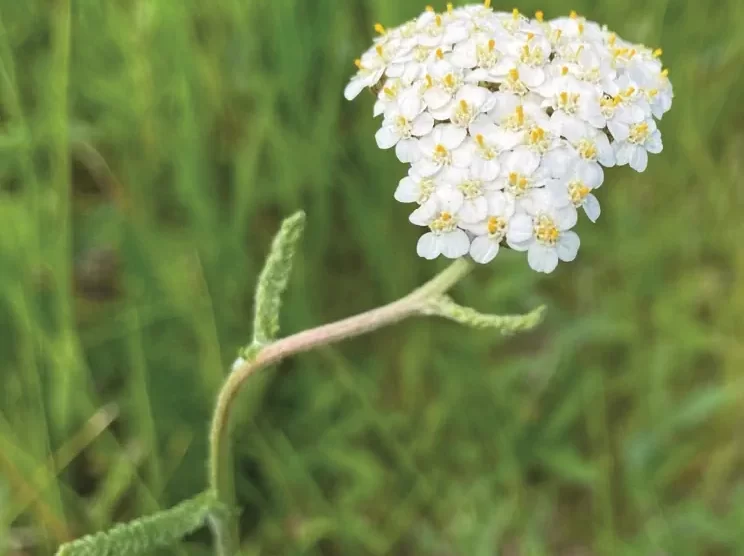When I was a Nature Safari Day Camp Coordinator, every camp ended with passing out wildlife awards for attributes that individual day campers had brought to our camp to make the week memorable. Almost every year there was a Yarrow Award, so named due to its immense usefulness and healing abilities, qualities that are delightful to find in a day camper or a friend. Whenever I come across the umbrella of tiny delicate white flowers of the yarrow I try to take the time to run my fingers along the fern like leaves and reflect on memories of the yarrow personalities in my life. August is a perfect time to look for the white blossoms of the yarrow, as it falls in between the plant’s blooming periods of June and September.
Yarrow seems to have been used by people as far back as 6000 years ago. Its Latin name, Achillea millefolium, “stems” from Achilles who is said to have healed his soldiers with this plant. Indigenous people like the Blackfoot also know of its several medicinal qualities. Everything from warding off mosquitos with its leaves to treating fevers and lowering blood pressure. Rich in various vitamins from A to Zinc, including calcium, it is no wonder this plant is used wherever it is found across the world. The favourite plant phrase of the day campers was, “If you get shot by an arrow, go look for yarrow.” This comes from the yarrow flowers’ ability to stop wounds from bleeding by helping clots to form. If you have stuffed up sinuses, you can also shove some dried yarrow up your nose to relieve the congestion, but as always do not attempt to use plants for herbal remedies without consulting with someone who actively uses the plant, so you use the correct parts of the plant at the appropriate time of year.
The yarrow’s usefulness extends far beyond the medical cabinet. It is a hardy, drought tolerant plant, which means that during heat waves it can still be seen blooming as a little beacon of both beauty and food. Bighorn sheep, pronghorns, and deer use the flowers as forage and sage grouse rely not only on the foliage for food, but also feed on the insects attracted to the yarrow. Pollinators love the yarrow flowers, which make this an excellent native plant to add to your gardens to attract bees and butterflies and the birds who like to eat those pollinators. It also attracts helpful insects such as ladybugs to get rid of unwanted insects in your garden. In addition, yarrow also acts as a natural deterrent to some insects such as mosquitoes and ants just with its odour.
Yarrow has also been found to be effective for helping with anxiety and depression. Although I have never tried this myself, I know that those day campers who received the Yarrow Award were often the caregivers, those in tune with the needs of the group and how they could serve the greater good. Reflecting on the memories of them while I’m running my hands over the fuzzy yarrow leaves certainly helps to brighten my mood.
Dedicated to Jackie & Ernie, the yarrows at the gate who were always there to attract wildlife, heal wounds, and bring joy.


























